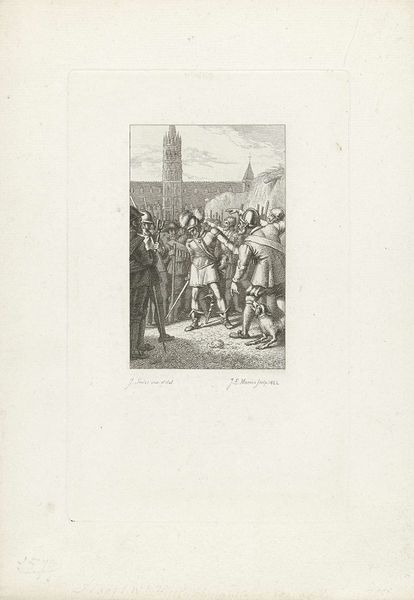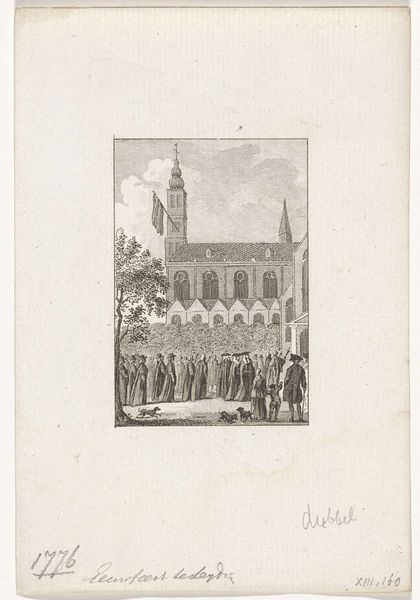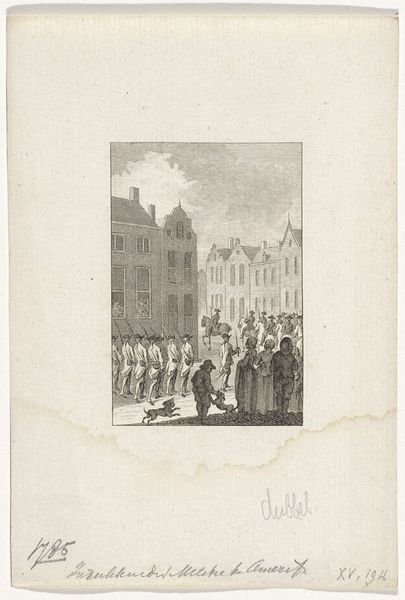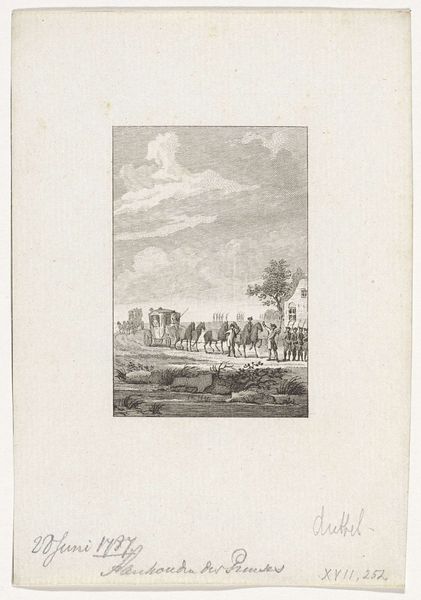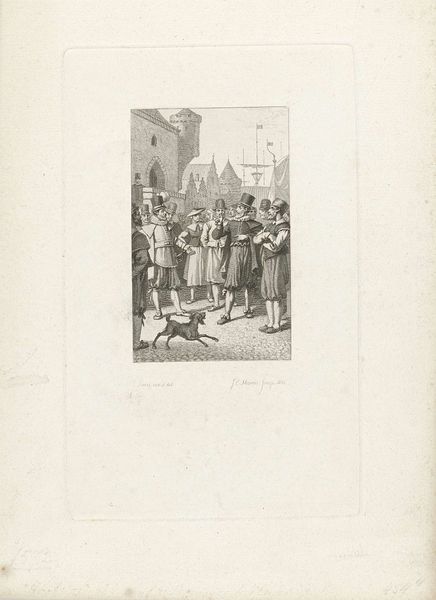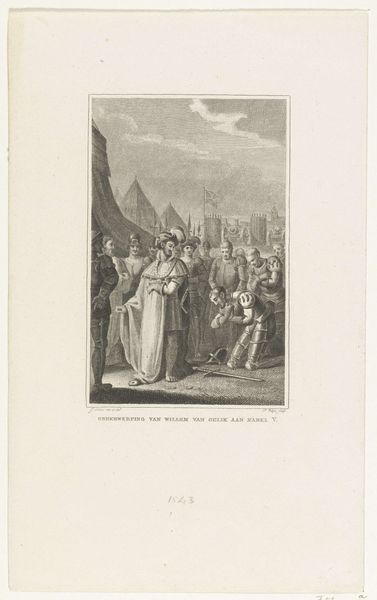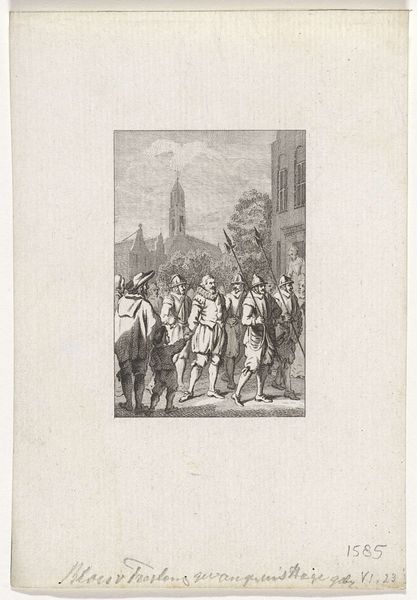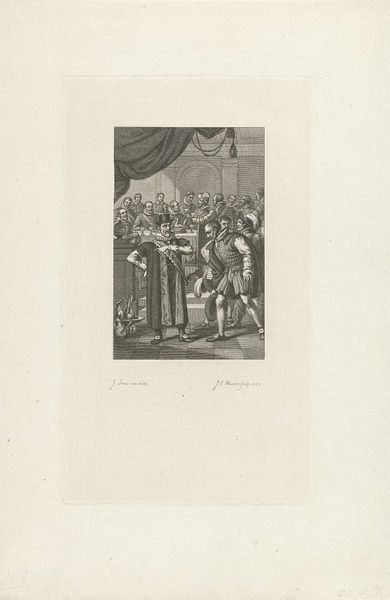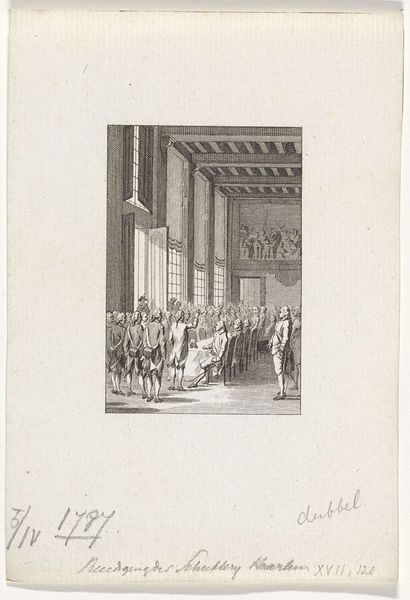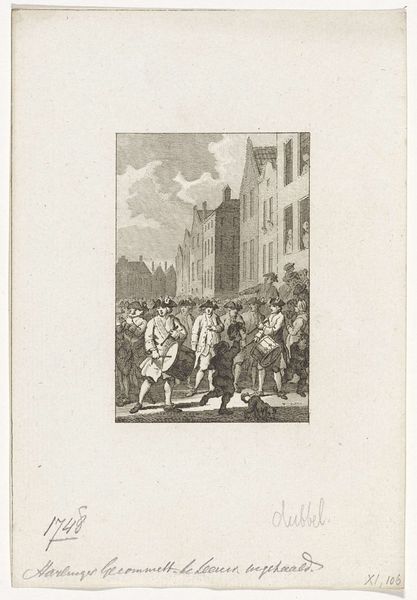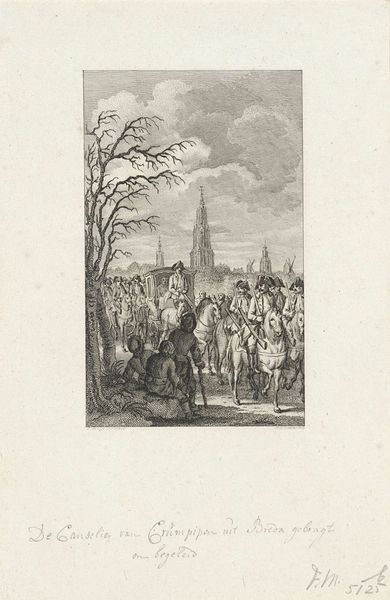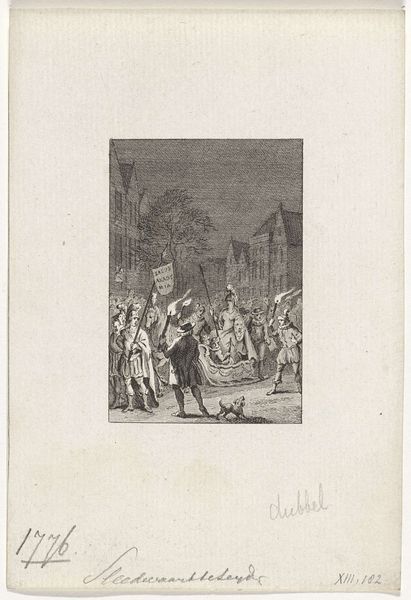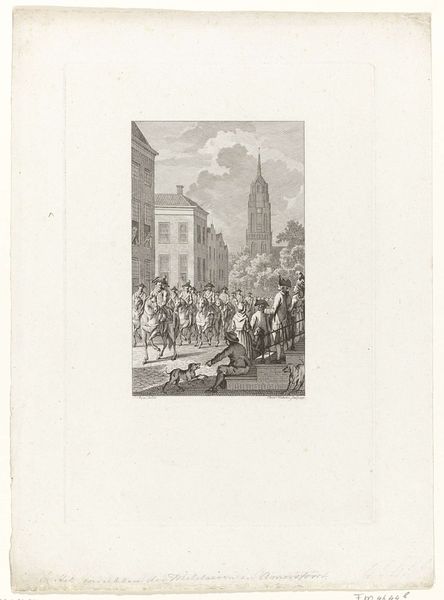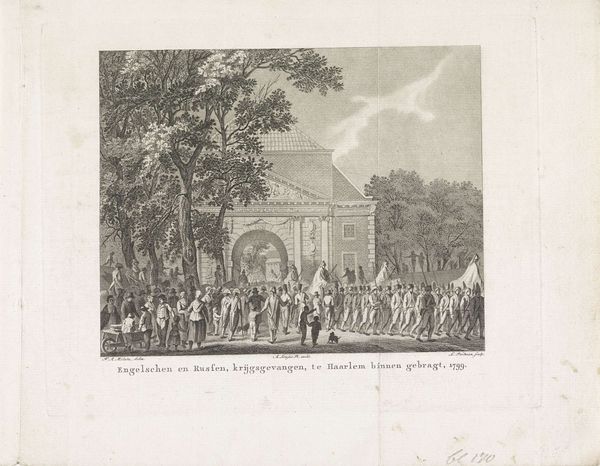
print, engraving
#
narrative-art
# print
#
old engraving style
#
personal sketchbook
#
group-portraits
#
cityscape
#
history-painting
#
engraving
Dimensions: height 239 mm, width 145 mm
Copyright: Rijks Museum: Open Domain
Curator: Here we have Jacob Ernst Marcus’s 1822 engraving, "Flinke taal van Kornput te Steenwijk, 1581," housed right here at the Rijksmuseum. What's your immediate reaction? Editor: It's stark, almost theatrical. The composition feels very staged, everyone is clearly delineated but the depth is flat and undynamic. It feels…posed. Curator: Which aligns with its context. This is history rendered for a 19th-century audience, referencing events of 1581. Marcus recreates the moment Dirck Volckertszoon Coornhert, or Kornput, persuaded the garrison of Steenwijk to side with William of Orange against the Spanish. The visual language is, understandably, one of moral clarity. Editor: And that clarity feels idealized, almost sanitized. Where is the grit and mess of a besieged city, the chaos of war? Everything appears too neat, even the uniforms. It speaks to the impulse to create heroes, uncomplicated narratives in service of a new nation, wouldn't you say? Curator: Absolutely. The image functions as a didactic tool, part of a larger cultural project shaping Dutch identity. We see it, too, through the style of printmaking. Editor: The printmaking further amplifies this effect by lending it the patina of authority. It’s clean, reproducible. The old engraving style makes it seem almost like an official document, imbuing the narrative with a veneer of historical fact. It's not just showing history; it’s performing it. Curator: Precisely. The seemingly objective rendering strengthens its message about the heroic choices of the Dutch people during that turbulent time, conveniently side-stepping any messier realities or ambiguities of the situation. Editor: And those realities were rife with ideological clashes, religious tensions… the engraving sidesteps all that to craft a simplified narrative of patriotic resistance. But who was this image for? Did it truly mobilize sentiments? Or mainly served to solidify the cultural dominance of the time period in history? Curator: Good point. The print would've likely circulated among educated circles, reinforcing existing nationalist sentiments within those groups. But it's crucial to remember the role that museums played. Disseminating these ideas more broadly— ideas about Dutch history, national pride... Editor: An archive shaping public imagination of history, one artwork at a time. The way in which a collective imagination is formed can be just as interesting as what the original intent of this artwork was. Curator: Exactly! It all serves as a reminder of the ongoing construction of historical memory.
Comments
No comments
Be the first to comment and join the conversation on the ultimate creative platform.
